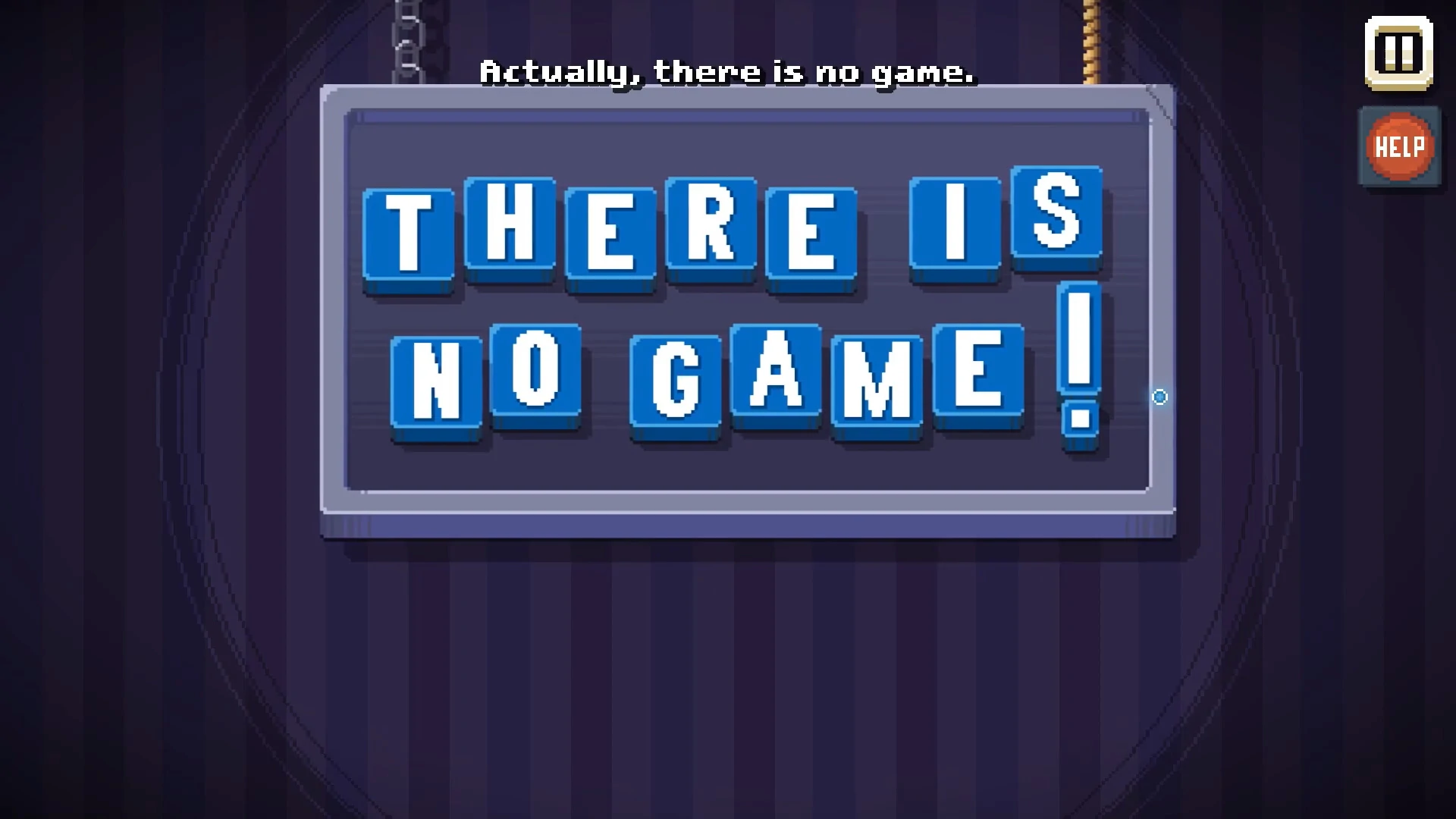There is no Game uses metaproceduralism, not only to expose to us the obvious of popular game mechanics, genre, play, etc., but also to tell us about how humans interact with and think of irony. From the get-go, we are discouraged from “playing”. The warnings and scoldings of Game are, in reality, nudges of how the player should proceed. Welcomed with insults, naturally I poked and prodded around until I found something, anything, to do. Even when the puzzles did stump me, sincere clues were only a click away. This game is therefore, based on reaction, and is a prime example of the adage “games don’t play themselves”. Without the player’s insistence, there really would be no game to There is no game.

Due to some combination of being gullible and thinking too hard about simple things, I followed the flashy arrows. And since I bought this game on steam, I can collect achievements! As I kicked myself out of the program, I was surprised to find that I had also unlocked an achievement!

As a non-diegetic, machinic element, achievements tell us about how we play. Both the “trap” of quitting and the obstinate continuation of this game are therefore desirable. So, even in not playing, we are playing the game! This exposes the interactive aspect of irony. The player is meant to interpret the irony of the game as a whole in order to progress, and the achievement for lack of participation reinforces this irony in the non-diegetic universe. When someone makes the same mistake as I did, the badge (and possible collection of more) encourages the player to go back and continue exploring. There is no Game therefore gives us some insight as to ironic form and the ways in which we react to irony inside, as well as outside, of games.

